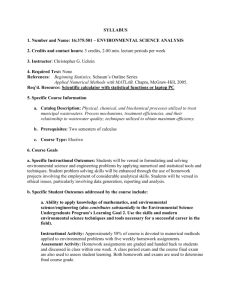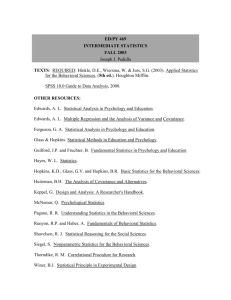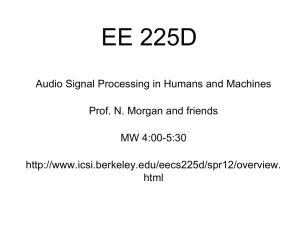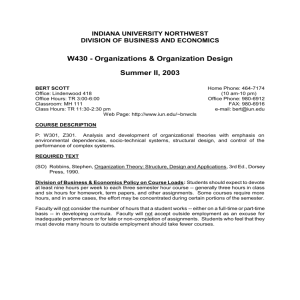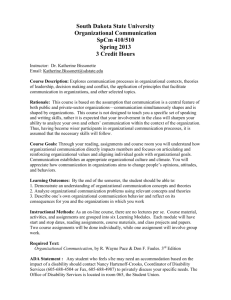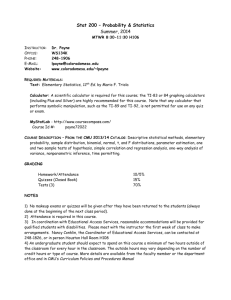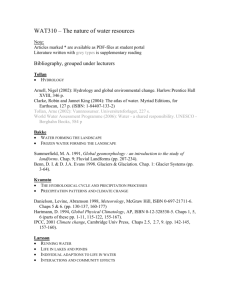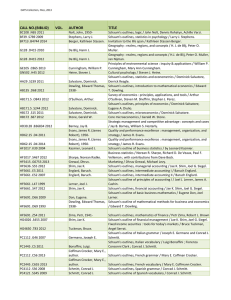375:303 Numerical Methods in Environmental Science
advertisement
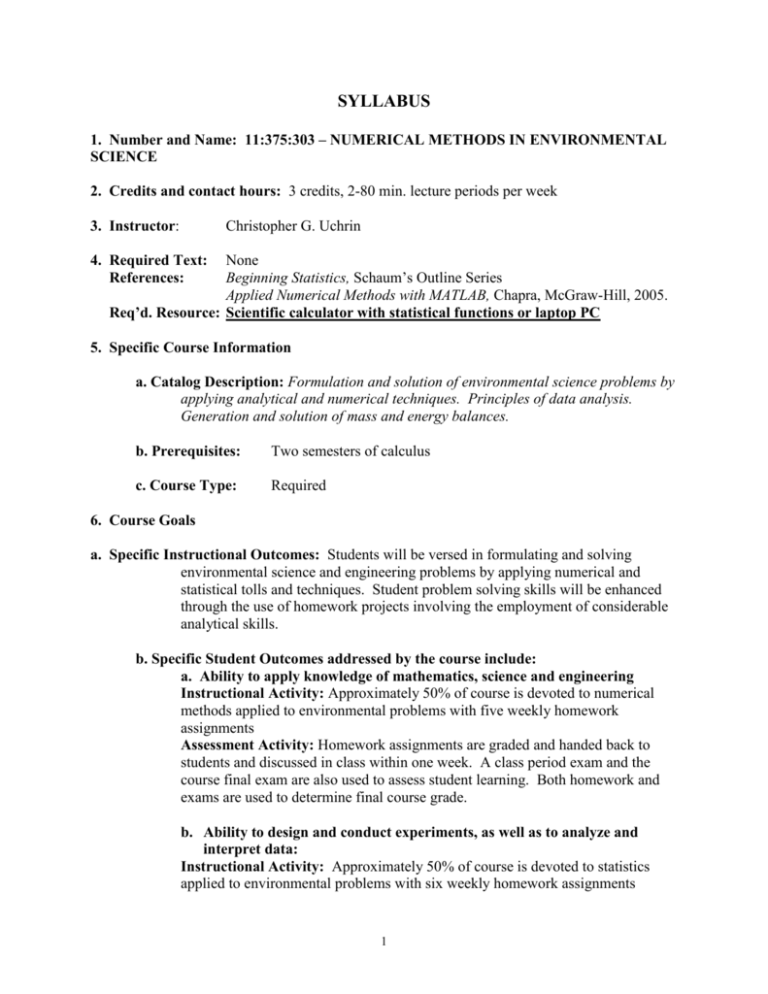
SYLLABUS 1. Number and Name: 11:375:303 – NUMERICAL METHODS IN ENVIRONMENTAL SCIENCE 2. Credits and contact hours: 3 credits, 2-80 min. lecture periods per week 3. Instructor: Christopher G. Uchrin 4. Required Text: References: None Beginning Statistics, Schaum’s Outline Series Applied Numerical Methods with MATLAB, Chapra, McGraw-Hill, 2005. Req’d. Resource: Scientific calculator with statistical functions or laptop PC 5. Specific Course Information a. Catalog Description: Formulation and solution of environmental science problems by applying analytical and numerical techniques. Principles of data analysis. Generation and solution of mass and energy balances. b. Prerequisites: Two semesters of calculus c. Course Type: Required 6. Course Goals a. Specific Instructional Outcomes: Students will be versed in formulating and solving environmental science and engineering problems by applying numerical and statistical tolls and techniques. Student problem solving skills will be enhanced through the use of homework projects involving the employment of considerable analytical skills. b. Specific Student Outcomes addressed by the course include: a. Ability to apply knowledge of mathematics, science and engineering Instructional Activity: Approximately 50% of course is devoted to numerical methods applied to environmental problems with five weekly homework assignments Assessment Activity: Homework assignments are graded and handed back to students and discussed in class within one week. A class period exam and the course final exam are also used to assess student learning. Both homework and exams are used to determine final course grade. b. Ability to design and conduct experiments, as well as to analyze and interpret data: Instructional Activity: Approximately 50% of course is devoted to statistics applied to environmental problems with six weekly homework assignments 1 Assessment Activity: Homework assignments are graded and handed back to students and discussed in class within one week. A class period exam and the course final exam are also used to assess student learning. Both homework and exams are used to determine final course grade. Lecture Topic 1 Introduction, Frequency Distributions in One Variable (Schaum Chaps. 1 & 2) 2,3 Central Tendency Measures, Dispersion, Outliers (Schaum Chaps. 3 & 4) 4,5 Hypotheses, Comparison of Means, t-test (Schaum Chaps. 10 & 11) 6 Analysis of Variance (ANOVA), F-test (Schaum Chap. 11) 7 Chi-Square (Schaum Chap. 12) 8 Elementary Linear Regression; Correlation (Schaum Chap. 13, Chapra Chap. 12) 9-11 Limiting Linear Transformations of Zero- and First-Order Reaction Rate Equations, Rate Functions (Langmuir Isotherm Example) and Power Functions (Freundlich Isotherm Example) (C.G.U. Notes) 12 Exam 1 (10/13/10) 13 Multiple Linear Regression (Chapra 13.2) 14 Numerical Solution of non-Linear Algebraic Equations (Chapra Chap. 6) 15 Linear Algebraic Equations and Matrices (Chapra Chap.7) 16-18 Water Matrix Inversion; Application to Multiple Linear Regression and Finite Section Quality Mass Balance Models (Chapra Chaps. 1 & 10) 19-22 Flood Solution of Differential Equations Using Euler’s Method with application to Routing Mass Balance Hydrologic Model (Chapra Chap. 18) 23-24 Notes) Fourier Series Analysis with Application to Periodic Step Function (C.G.U. 25-27 Environmental Engineering Economics; Cost/Benefit Analysis (C.G.U. Notes) Exam 2 2 Grading: Homework Exam 1 Exam 2 40% 30% 30% Students in 375:501 will be required to perform extra homework and will have more advanced exam questions Contribution of Course to Meeting the Professional Component: Course contributes to the 1-1/2 year requirement for ENGINEERING TOPICS Prepared by: Christopher Uchrin 08/30/11 3
